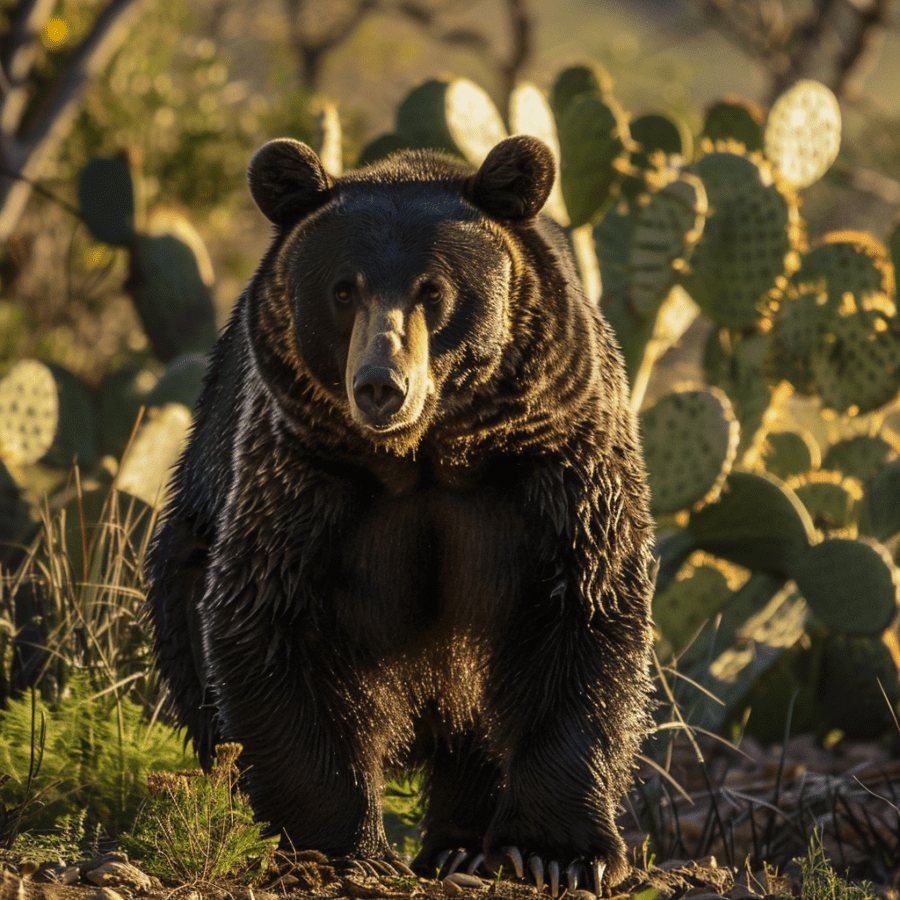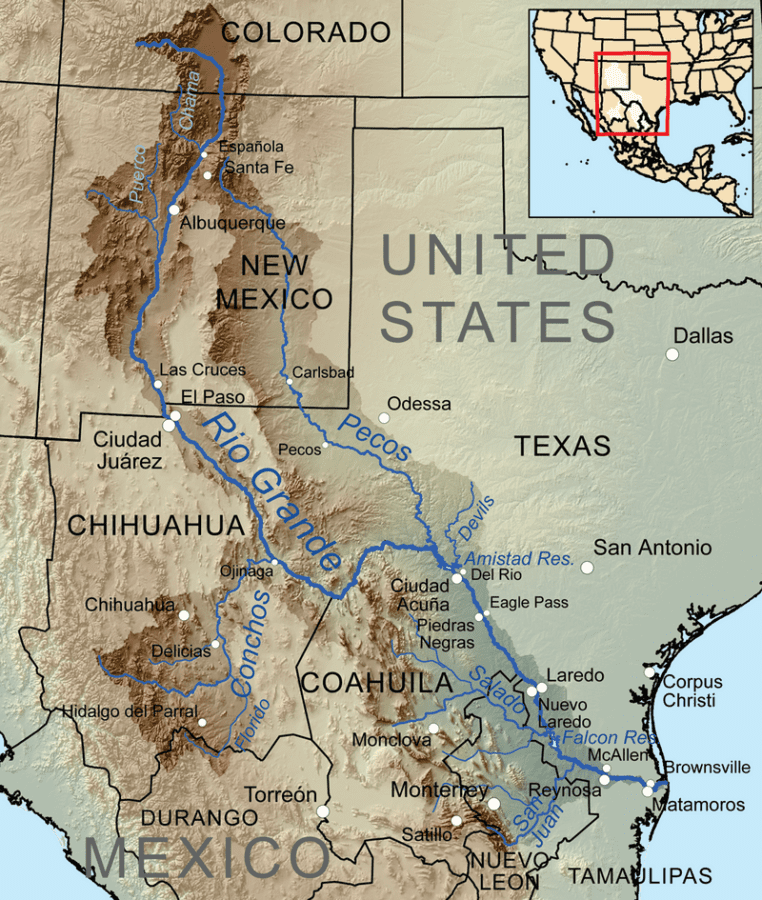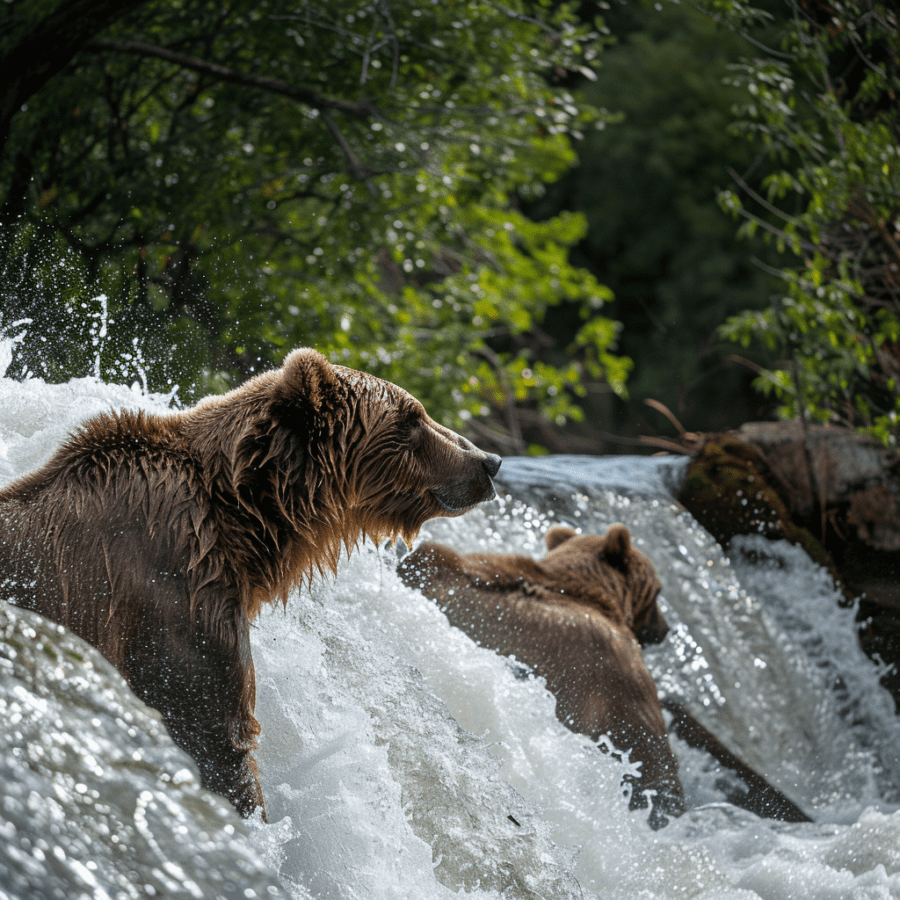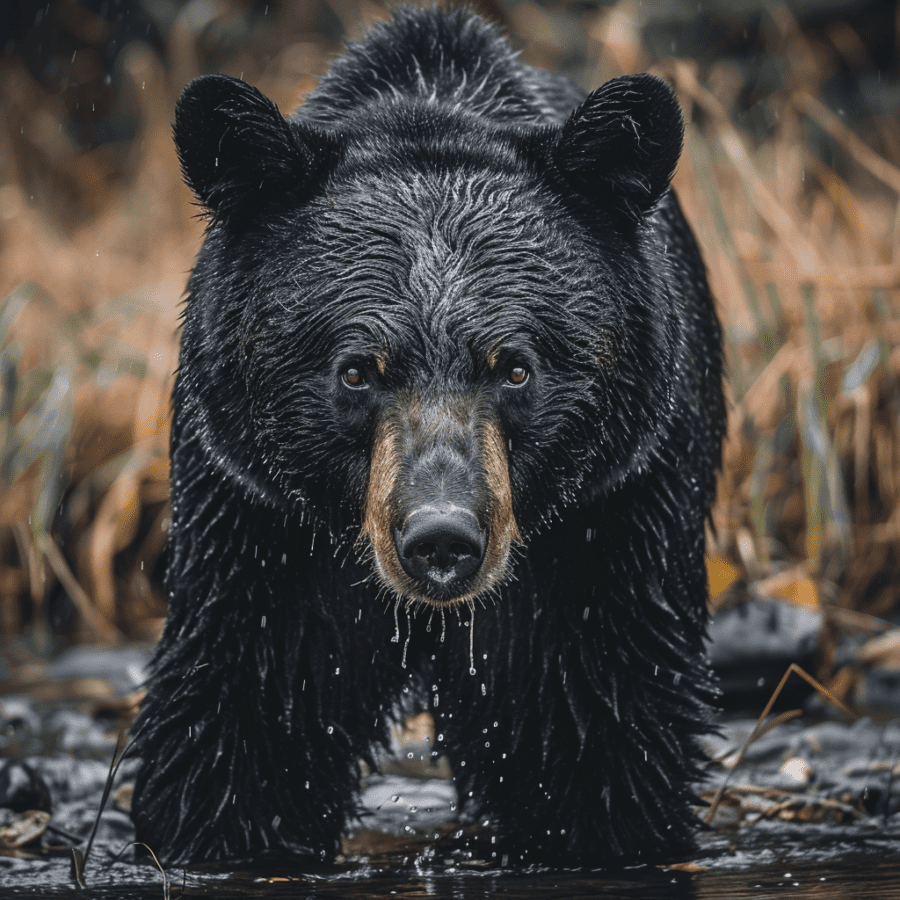Share the post "From Extinct to Thriving: The Remarkable Return of Mexican Bears in Texas"
Imagine you’re on a hike, the crunch of leaves underfoot, the crisp air filling your lungs, when suddenly, a rustling in the bush stops you in your tracks. It’s a bear, and you’re in its territory. You’d better know how to react, right? In this article, we’ll explore the fascinating world of bears in Texas, from the extinct Mexican grizzly to the returning black bears.
Once known as the ‘pissini’ in the Opatas language, the Mexican grizzly was a magnificent creature, boasting a length of up to 6 feet and an average weight of 701 lbs. Today, we’re seeing the return of the black bear, a resilient species that’s making a comeback after decades.
Join us as we explore the intriguing tales of these two distinct bear species, their histories and characteristics, and their evolving relationship with the Texas landscape.

Historical Presence of Mexican Bears in Texas
Bear witness to the fascinating narrative of Mexican bears’ historical presence in Texas. Let’s first turn the pages back, shedding light on the imposing figure of the Mexican grizzly bear. Known as “pissini” in the Opatas language and characterized by its uniquely dark fur, this beast was one of Mexico’s largest mammals. Standing at 6 feet in length with an average weight of around 700 pounds, its majesty was undeniable.
Let’s leap forward to the late 1980s. During this period, a lone female black bear took on an awe-inspiring journey. Descending from Mexico’s Sierra del Carmen, crossing miles of desert, and braving the currents of the Rio Grande, she made her way to the forested slopes of the Chisos Mountains in Big Bend National Park.
Bear in mind that this wasn’t for mere exploration; it marked the homecoming of black bears to Texas, credited in part to the preservation of their natural habitats.
Explore deeper into this signature evolution of bears throughout history and uncover their remarkable journey and indelible presence in Texas.

Current Status of Mexican Bears in Texas
Presently, black bears are making a triumphant return in Texas, thanks primarily to habitat preservation and restoration efforts in state parks. One notable case involved a determined female black bear in the late ’80s. Leaving the Sierra del Carmen in Mexico, she navigated miles of desert, swam the Rio Grande, and crossed more arid landscapes to reach Texas’s forested Chisos Mountains. Experts believe her offspring continue to inhabit these mountains.
Notably, the proposal for a border wall poses potential threats to wildlife, including bear populations. Concerns raised include it counteracting the parks’ conservation efforts and its impact on various species beyond just bears. These conflicting interests underline the delicacy of the situation. Its outcomes could significantly influence the Mexican bears’ future in Texas.
- Reappearance of black bears in Texas: One marked case involves a female black bear’s journey from Mexico.
- Role of habitat preservation: It plays a considerable part in the bears’ return.
- Potential implications of the controversial border wall: It could possibly hamper wildlife conservation, affecting multiple species.

Conservation Efforts and Cross-border Collaborations
The focus of conservation has shifted, with a great emphasis on preserving habitats and enhancing wildlife’s mobility. Efforts like these have unquestionably played a vital role in the return of the black bears.
For instance, extensive efforts by biologists to safeguard tracts of undisturbed wilderness have borne fruit. These preservation strategies emphasize creating green corridors that allow wildlife mobility, a critical factor in species survival. Specifically, these corridors provide the roaming space essential for black bears, fostering their natural behavior and survival.
On another front, complex cross-border collaborations have occurred. Many organizations, local and international, have joined hands to ensure the continuity of these efforts. Cooperation extends beyond borders, with Mexico also playing an instrumental role. A case in point is Maderas Del Carmen, a protected area in Mexico, which serves as a refuge for black bears, fostering their cross-border mobility to Texas.
The roadmap for the future continues to be twisted, though. The proposed border wall could compromise these efforts, creating barriers for wildlife.

Human-Bear Interactions in a Changing Landscape
Imagine a bear traversing a significant 155-mile distance, a route that, on paper, takes it right through downtown Houston. Of course, it didn’t strut down Houston’s main street. Neither did it swim across the nation’s fifth-largest bay system. But, at some juncture, it had to cross Interstate 10, navigate coastal prairies, circumnavigate the Galveston Bay complex, and make it down to Bay City.
Put yourself in its paws. Perhaps it originated from the Trans-Pecos area, near Big Bend in the Lajitas area. For you, it’s a 651-mile drive. For the bear, a straight 472-mile journey through various territories, from booming cities to remote wildlife refuges, up to the international borders—quite the epic trip.
Reflect on that late ’80s female black bear who left her home in the Sierra del Carmen in northern Mexico. She descended mountains, crossed miles of deserts, swam the Rio Grande, and trekked more desert to reach the forested Chisos Mountains in Big Bend National Park.
These bear journeys demonstrate the resilience and adaptability of black bears, but also expose the challenges posed by changing landscapes—balancing conservation and development remains crucial. Strive to coexist with these incredible creatures, respecting their space and their bearing on our ecosystem. It’s a bear necessity.
Share the post "From Extinct to Thriving: The Remarkable Return of Mexican Bears in Texas"
Christian Linden is a seasoned writer and contributor at Texas View, specializing in topics that resonate with the Texan community. With over a decade of experience in journalism, Christian brings a wealth of knowledge in local politics, culture, and lifestyle. He holds a Bachelor's degree in Communications from the University of Texas. When he's not writing, Christian enjoys spending weekends traveling across Texas with his family, exploring everything from bustling cities to serene landscapes.











